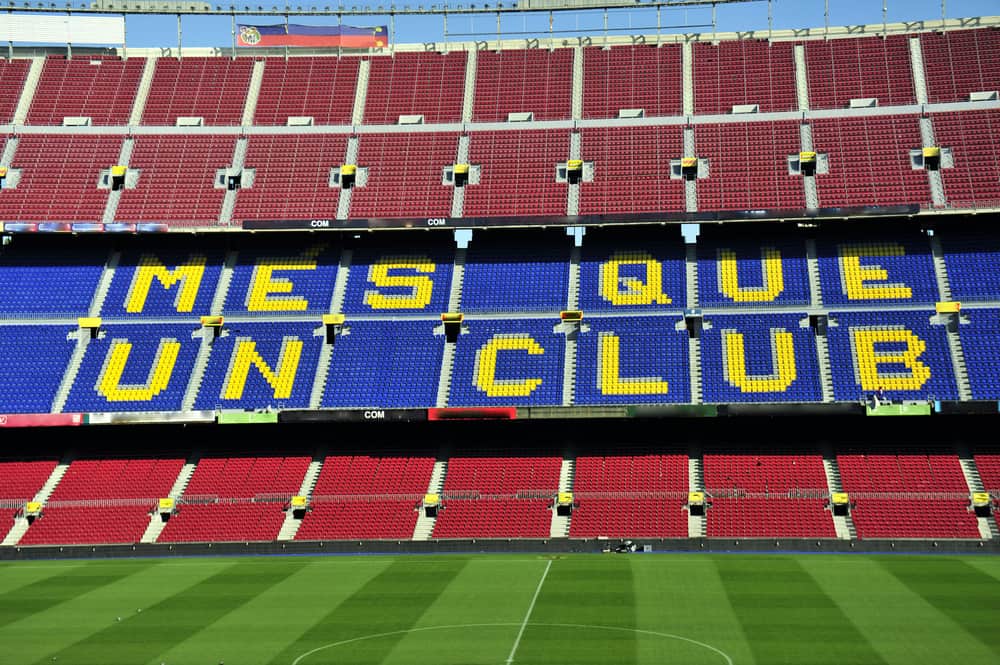The home of the Barcelona soccer team, Barca, is Camp Nou, the largest sports stadium in Europe, with a capacity of about 120,000. The popularity of the team can be attested to by the scarcity of tickets to see them, despite the size of the stadium. Most seats in Camp Nou are occupied by socis (or members) the wealthiest soccer club in the world.
The city stops on game day
If you thought your home city got fanatical about sports, check out Barcelona. Membership in the soccer club may be handed down through generations, and is seen as a mark of Catalan identity. During the dictatorship, Madrid’s team was marked as a symbol of the loathed central government, and the matches between them and Barca were particularly contested. Even today, when Madrid comes to Camp Nou, the city stops to watch the game.

The Camp Nou museum
In a place this fanatical about soccer, it’s understandable that their stadium has a serious museum inside as well. If you go, get the whole tour. You’ll see the stadium (empty during museum hours), the chapel where players say prayers before major games, the club and pressrooms, and the tunnel players use when entering the field. You’ll find a wide assortment of photos, trophies, documents, kits, and other memorabilia in the museum collection, along with cards explaining each item’s significance in the dramatic history of Barca from 1899 to the present.
Though it has a strong slant to sports, the museum is a serious historical site, not just a place for fanatical soccer fans to visit. If you do go on the tour, be certain you bring your camera, even if you’re not a diehard soccer fan; some of what you’ll see is impressive enough for anyone.
Every year, more visitors come to the museum. And it is the most popular museum of any kind in Catalonia, more popular than the Picasso museum or the excellent science museum on Montjuic, with close to 1.2 million visitors a year. Understandably, it serves as a model for similar museums throughout the world.
The four sections of the museum include:
- The History Museum, housing the extensive historical collection of trophies, photos, sporting material, and other items appealing to fans.
- The Art Gallery, displaying works by artists like Dali, Miro, and Segrelles.
- The Colleccio Futbolart, footballing memorabilia on loan permanently to the musuem from its owner.
- Temporary exhibitions, like poster art related to Camp Nou and Barca.
You’ll also find an archives with video, photos and print documents dealing with the club’s history, which has proven to be an invaluable tool for journalists and other researchers.
Where to near Camp Nou
The Abba Garden Hotel is a large, terra-cotta, red building on top of a hill, and it’s rated four stars. It opened just in 2002 and is located less than a mile from Camp Nou. Since it’s well out away from the city center, it’s not limited on space, and you can see this in the grounds: landscaped gardens, tennis courts, a large outdoor swimming pool, and easy access to golf courses nearby.
The hotel is located well out of Barcelona, and taxis can be a little pricey. The restaurant and bar here are acceptable, though not outstanding. You’ll also find a sauna, solarium, and private garden. Babysitting is available.
